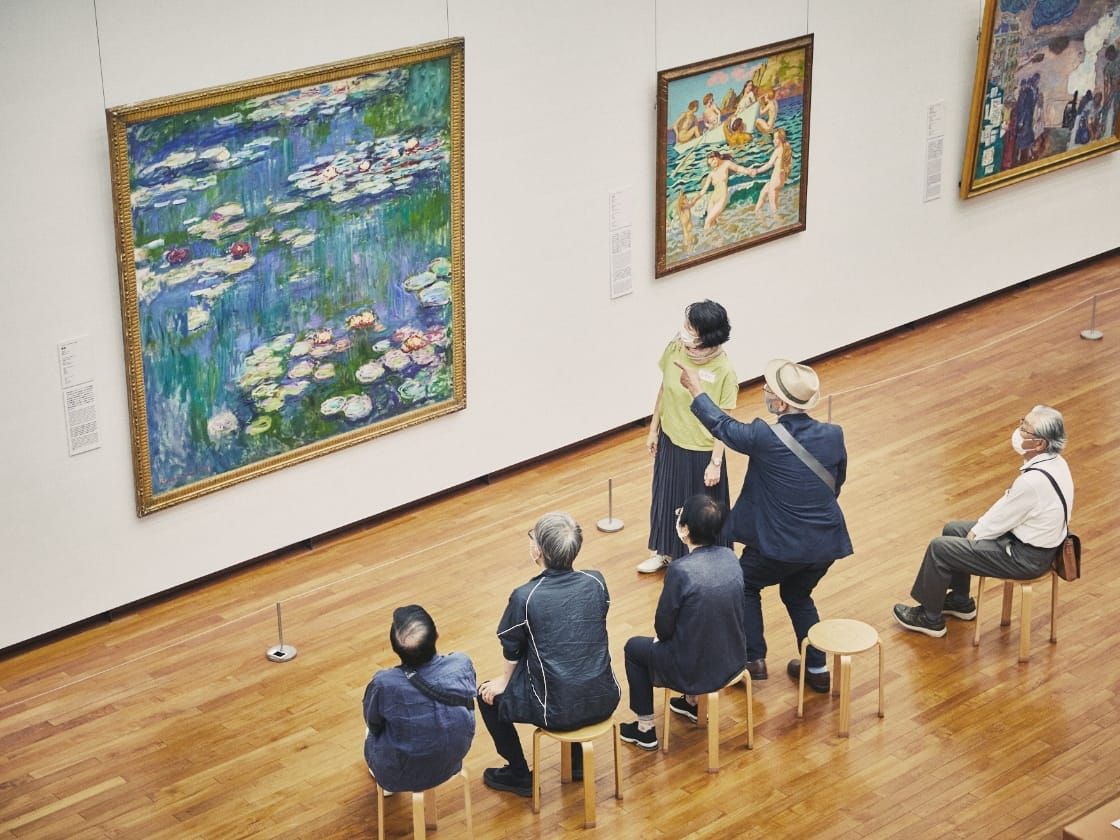My Favorite Piece: Collection Spotlight Vol. 3 Nakanoshima Museum of Art, Osaka Yanobe Kenji, Giant Torayan, 2005
A conversation with Senior Curator Nakamura Fumiko
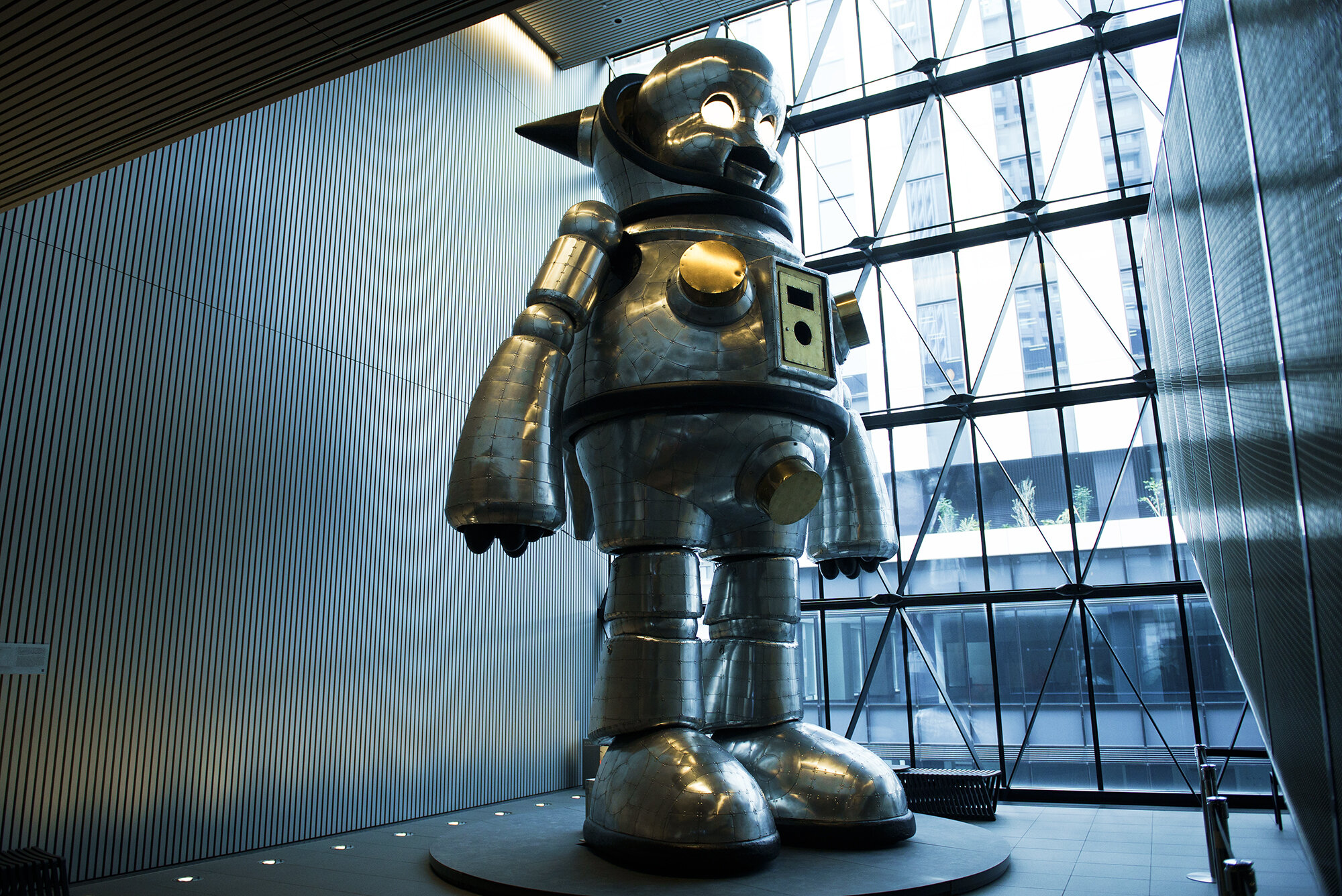
Yanobe Kenji, Giant Torayan, (2005)
In this series, museum personnel shine a spotlight on favorite pieces from their own museum's collection, works that they hope everyone will see and appreciate. For this third installment, we spoke with Nakamura Fumiko, a senior curator at the Nakanoshima Museum of Art, Osaka. The museum opened in 2022 in Nakanoshima, which is to the south of the Umeda area around Osaka Station. Since then, the black cube-shaped building has become a local landmark.
A variety of exhibitions since the museum opened
- Curator Nakamura Fumiko’s thoughts about her favorite piece
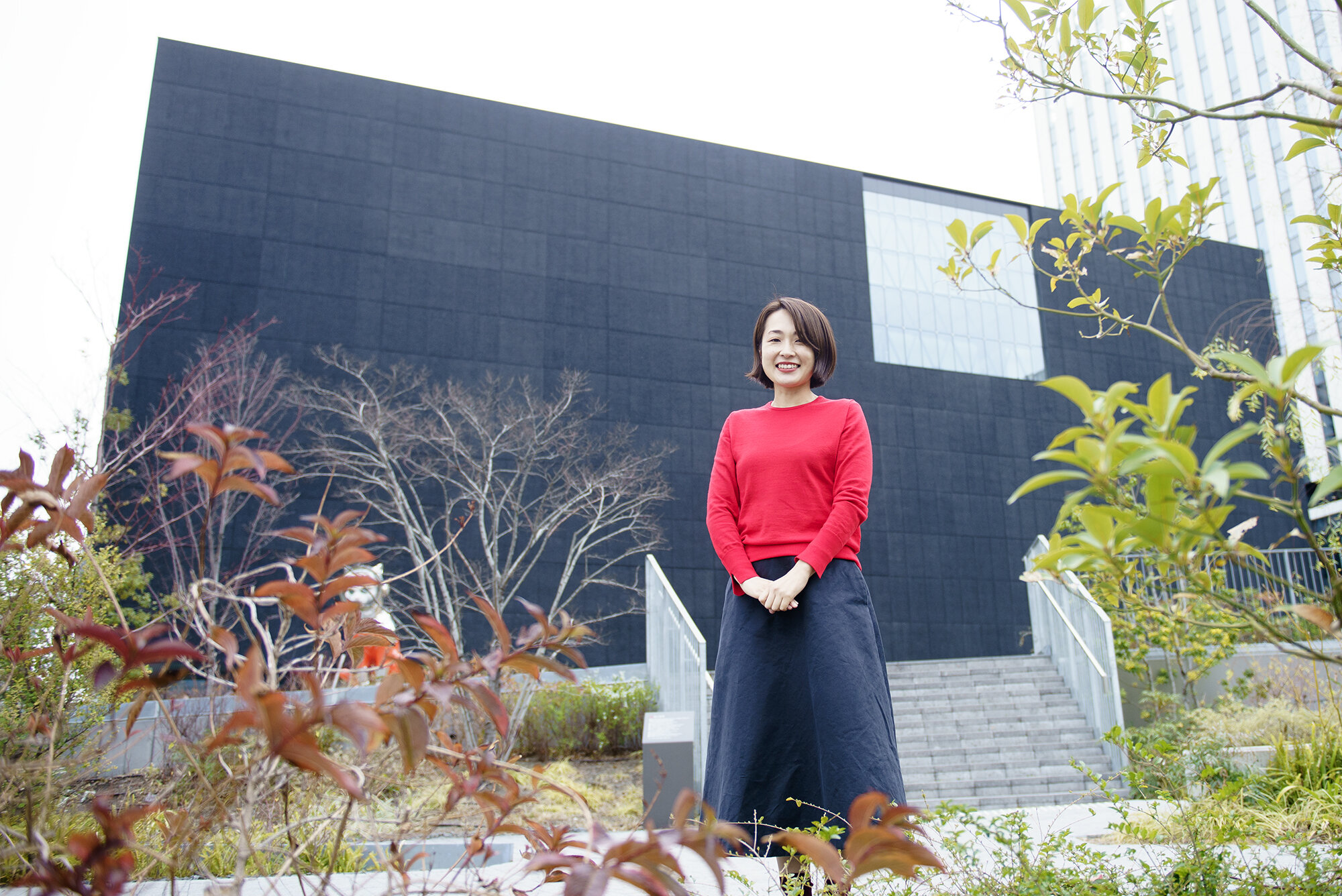
Senior Curator Nakamura Fumiko stands in front of the Nakanoshima Museum of Art, Osaka
A “guardian statue protecting children” as the face of the Nakanoshima Museum of Art, Osaka
The idea of building a museum of modern art was proposed in 1983 as one of the projects to celebrate the 100th anniversary of the founding of the city of Osaka. The project moved through a number of stages, beginning with a committee to work on the plan to create a new museum, followed by a planning office, and ultimately the Nakanoshima Museum of Art, Osaka opened on February 2, 2022. The museum began collecting works during this long lead-up to its opening, and it now has a collection of over 6,000 works. These include masterpieces of Western art as well as works and materials related to modern/contemporary art and design associated with Osaka.
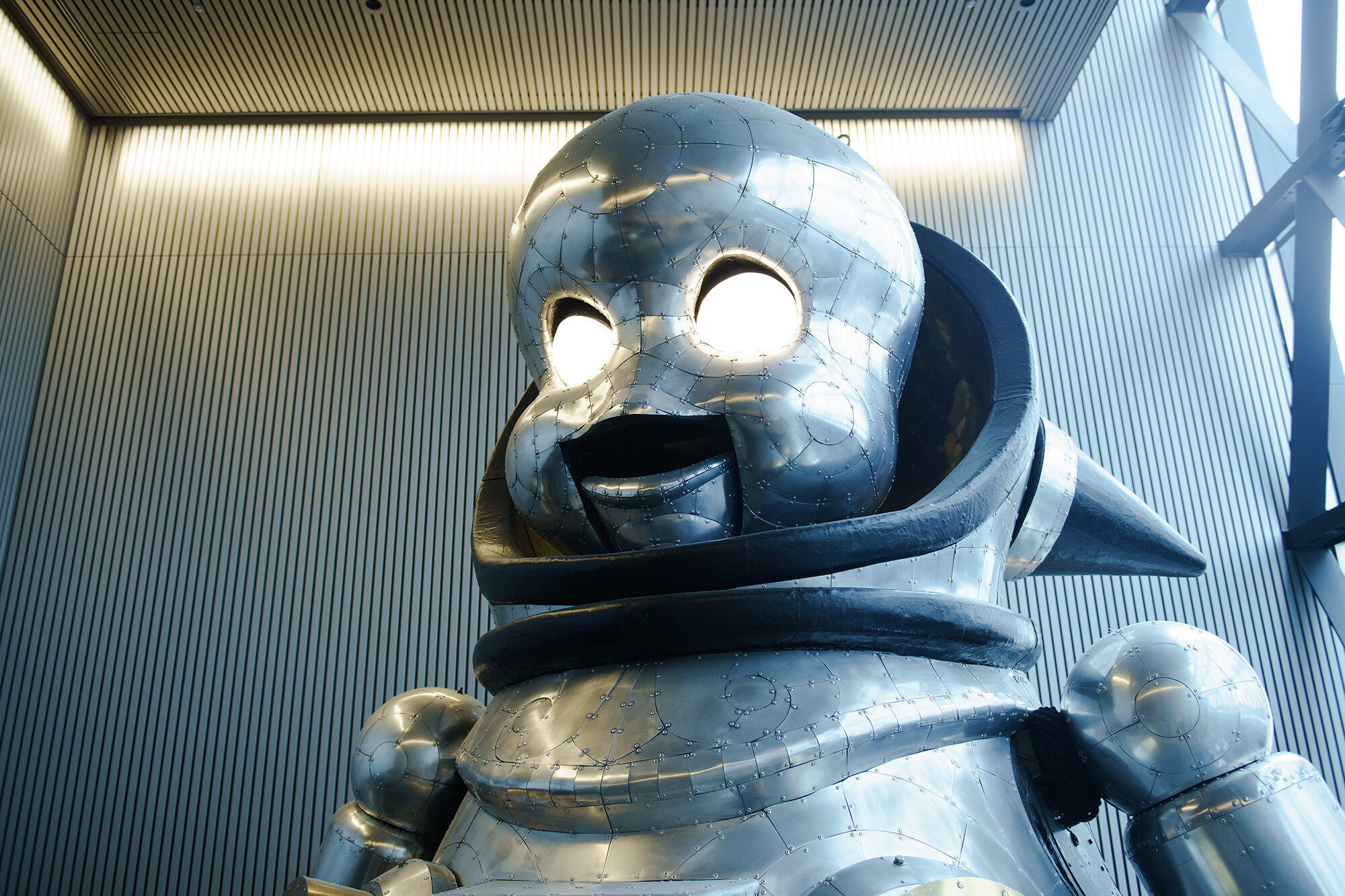
During his residency at the 21st Century Museum of Contemporary Art, Kanazawa in 2004, Yanobe Kenji launched the City of Children Project. He created Giant Torayan, a giant guardian deity protecting children, as a symbol for the project.
In this installment of the series, the favorite piece is Giant Torayan by Yanobe Kenji (b. 1965), which is on permanent display next to the stairs connecting the 4th floor and 5th floor, where the exhibition rooms are located. This giant robot sculpture, soaring 7.2 meters high, was created as a guardian statue protecting children. Nakamura shared her thoughts about the work with us.
“Yanobe Kenji is an artist who is from Osaka, and during his career he has unveiled many of his important works here in Osaka. The museum aims to be open to all sorts of people, from tourists to art experts, so when we were searching for a piece of art that would serve as a symbol for the museum, we felt that rather than a piece that presupposes specialized knowledge, we should choose something that everyone can enjoy, and that somehow evokes the essence of Osaka. Against this backdrop, the museum decided to add Yanobe's Giant Torayan to its collection and display it next to the staircase on the 4th floor, where anyone who comes to see exhibitions can appreciate it."
In 2004, Yanobe Kenji had a residency at the 21st Century Museum of Contemporary Art, Kanazawa, which had just opened that year. Nakamura’s favorite piece originated from the City of Children Project during that residency. Together with many local residents, Yanobe envisioned a future city for children, and they created a child-sized train, city hall, disco, and other pavilions. Giant Torayan was originally created in Kanazawa as a seated statue to symbolize the City of Children, but in a solo exhibition held at the Toyota Municipal Museum of Art in 2005 Yanobe transformed it into a figure standing on two legs. Since then, it has been exhibited around Japan, and even overseas.
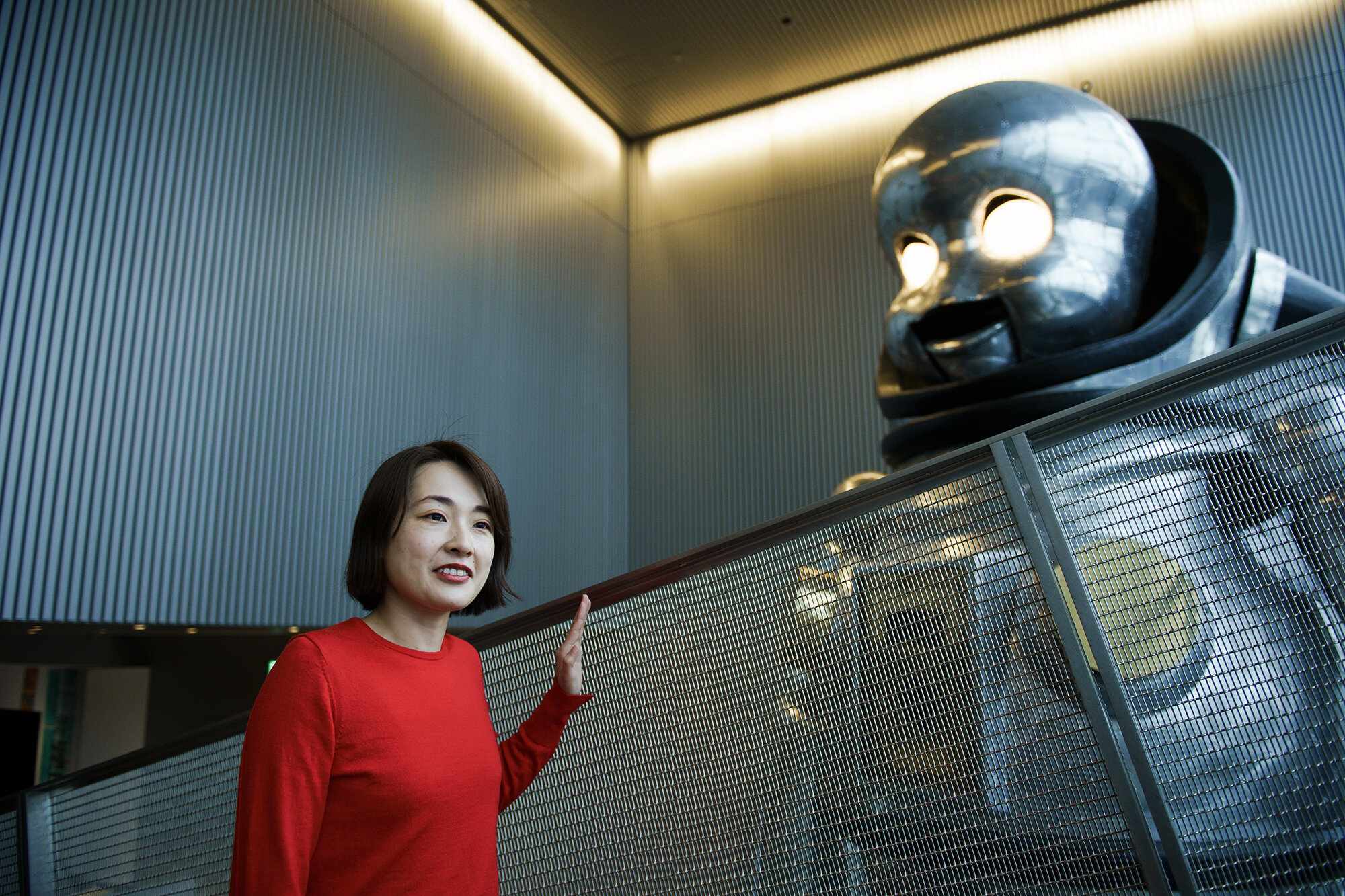
Nakamura talks about her favorite piece
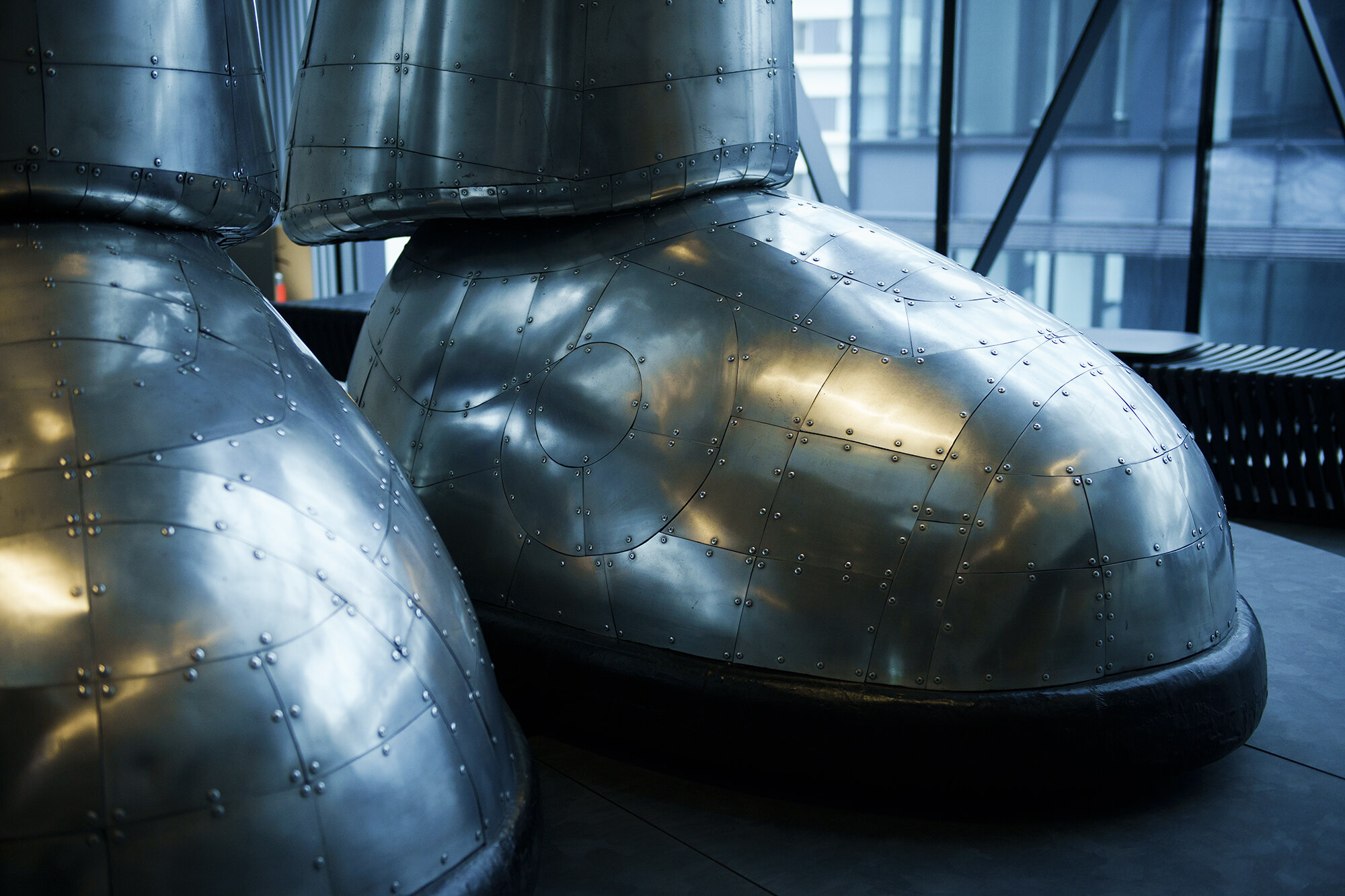
Based on sheet metal technology, Yanobe used the technique of riveting aluminum plate over molded resin, working carefully by hand to complete the piece
From survival to revival
Yanobe Kenji has been creating works exploring the theme of “survival” since the 1990s. This includes the Atom Suit Project, a photographic series in which he traveled to Chernobyl ten years after the nuclear accident, wearing a self-made protective suit that displayed a count of the amount of detected radiation. Yanobe’s father had taken up ventriloquism as a hobby when he retired, and the character of Torayan was born in 2003 when Yanobe gave the doll a small mustache and a “barcode” combover, dressing it in a miniature version of the protective suit that he had worn. Torayan has appeared often in Yanobe's works. In Cinema in the Woods (2004), conceptualized as a child-sized cinema exclusively for children, Torayan stands in front of the movie theater, and in the movie playing there Yanobe’s father and his puppet talk about nuclear issues through a manzai-style (comedy double act) exchange. Giant Torayan was created by blowing up that character to an enormous size. Nakamura explains that this marked a major change in direction.
"In the past, Yanobe would ironically express how people might survive in a world where utopia has been lost, doing things like wearing his ‘atom suit’ to visit places reminiscent of ruins. However, as he forged ahead with his work, precisely because it was so difficult to link it with talking to children about hope and the future, he shifted the concept to think more earnestly about a city of the future for children. Giant Torayan was born as a symbol of this change. Yanobe calls this shift moving from survival to revival.
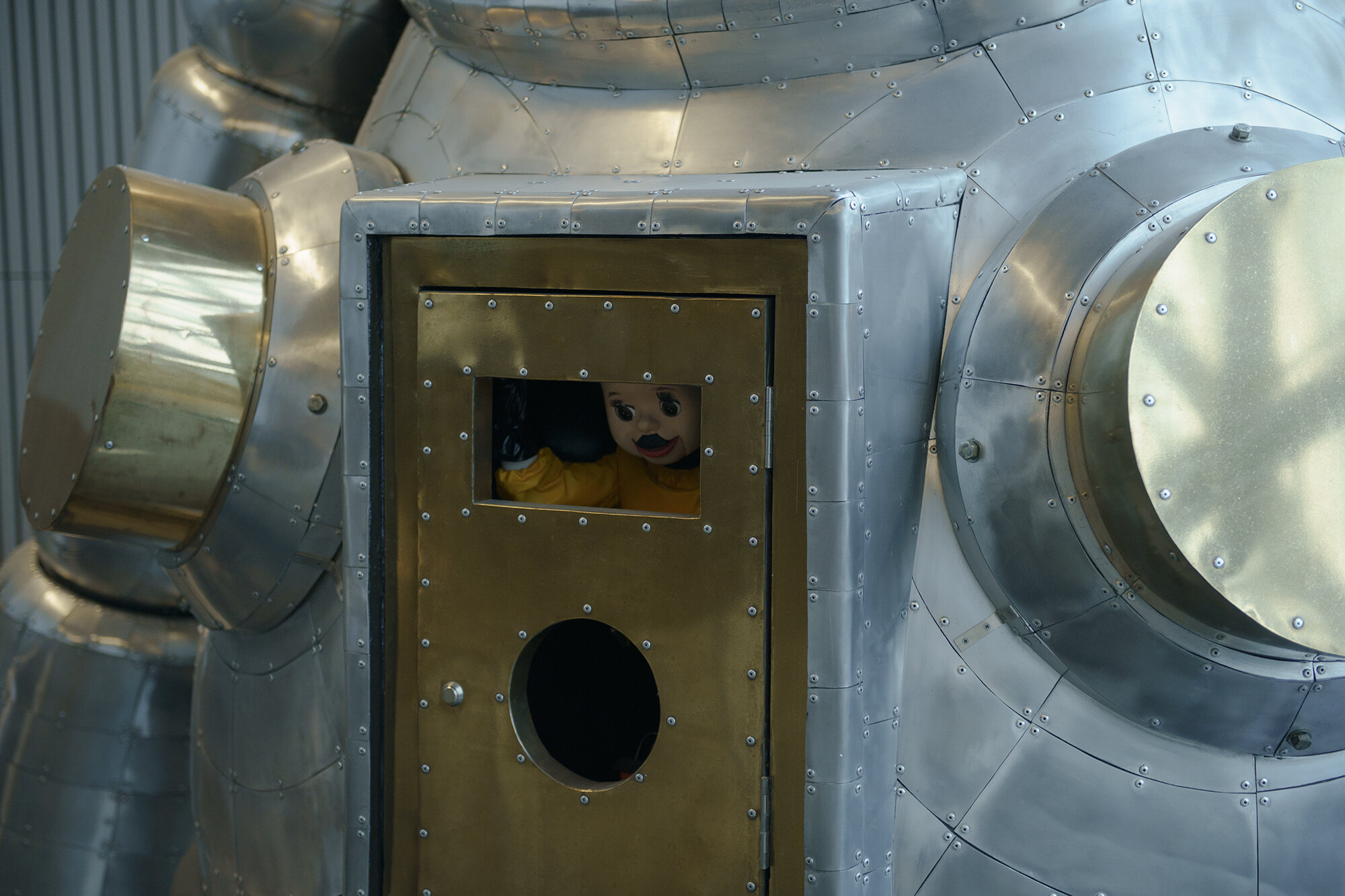
Torayan figure in the cockpit of Giant Torayan.
Yanobe created Giant Torayan by researching statues of deities from all over the world, including the Kongo Rikishi statues by Unkei and Kaikei, the leading Buddhist sculptors of the Kamakura period, while also incorporating anime and subculture elements. Nakanoshima Museum of Art, Osaka aims to be a museum that is open to everyone, from experts who come to the museum as part of their research and study, to visitors who have heard good things about the ice cream at the museum's first floor café. As such, the museum will be delighted if the news that there is a giant robot on display spreads, enticing more people to visit the museum.
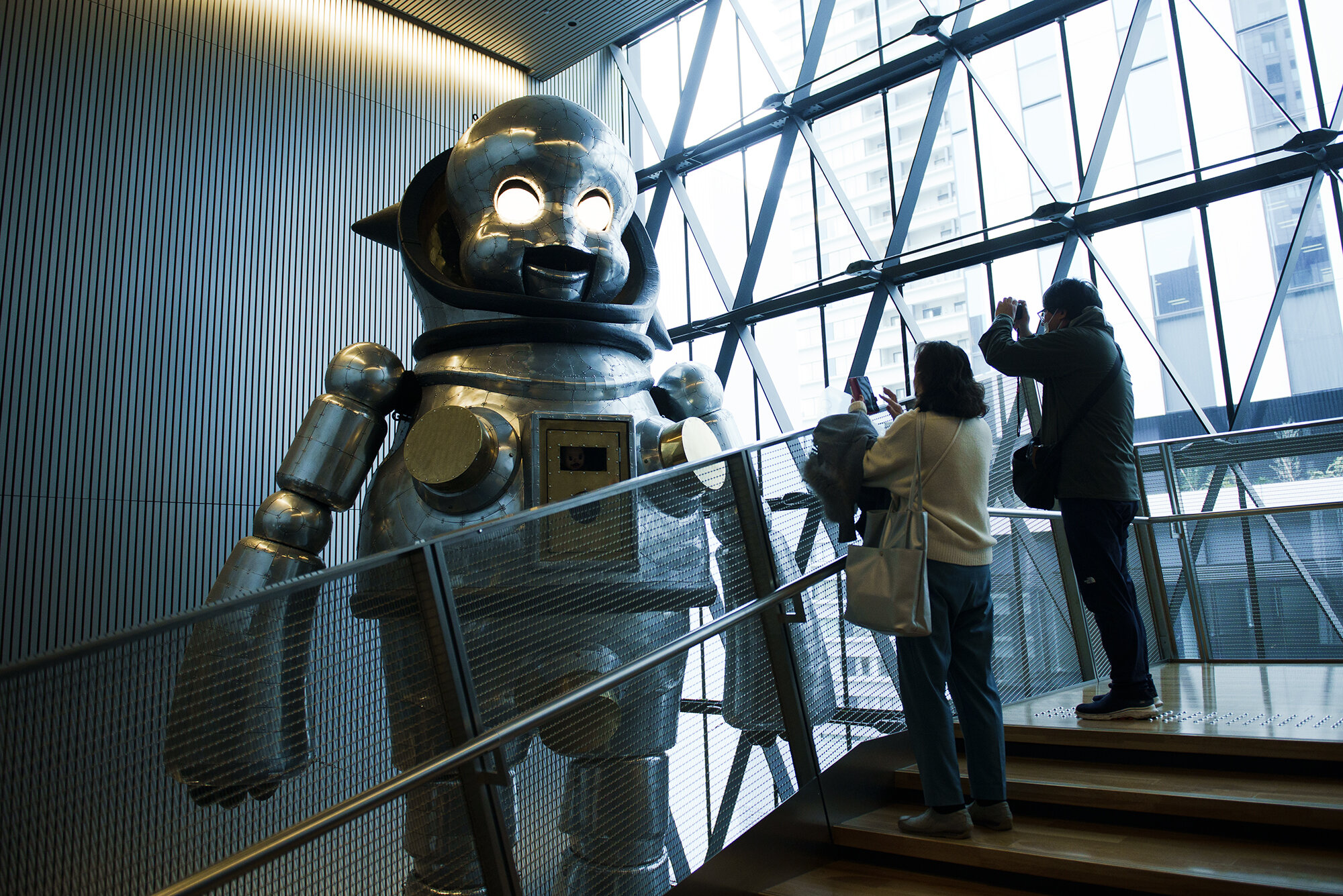
Almost everyone who uses the staircase stops at the landing on the way down from the 5th floor exhibition room to the 4th floor to face Giant Torayan.
Experience as student volunteer sparks interest
During her student days, Nakamura, who majored in aesthetics and art history at university, served as a volunteer for contemporary artist Christian Boltanski (1944–2021) when he was creating an installation for the Echigo-Tsumari Art Triennale in 2006. Until then, to Nakamura, art meant admiring works in art museums and learning about aesthetic theory, art history, and art criticism through books and lectures. But when she went to a place where art was being created, the live, hands-on encounter was a totally new experience for her.
“My experience as a volunteer was somewhat of a shock. I was able to see up close some of the struggles, sufferings, and joys that artists of my own generation came across as they created their works. We volunteers cleaned up an abandoned school so that Boltanski could create an installation, and I felt a sense of elation that a new work would come to life in that space. Until then, I had only known of works that were displayed in an orderly manner in places like museums. The experience made me want to work with artists who are active today. This in turn made me aspire to do the work of a curator, researching contemporary art and presenting contemporary works in exhibitions.
Besides Yanobe, there are many other artists with ties to Osaka who are working around the world today, including Morimura Yasumasa and Shiota Chiharu, who is slated to mount a solo exhibition at the Nakanoshima Museum of Art, Osaka in autumn 2024. However, there are still not enough institutions where we can study their careers in depth. The Kansai region, which encompasses Osaka, has given birth to various movements and produced many artists. In the 1980s, the Kansai New Wave movement, known for colorful and powerful art that filled up entire spaces, attracted attention, and going into the 1990s there was a flurry of collaborative works that crossed the boundaries between visual art and performance. One mission of our museum is to properly research and uncover the art of Osaka from that time. It’s a mission that I am personally committed to, as well.”
A variety of exhibitions since the museum opened
Since opening in 2022, the Nakanoshima Museum of Art, Osaka has hosted exhibitions of works by Modigliani, Okamoto Taro, and Monet, attracting large numbers of visitors. Moreover, taking advantage of its Osaka location, the museum mounted Into the Unknown World — GUTAI: Differentiation and Integration, in conjunction with the National Museum of Art, Osaka. This major exhibition showcasing the Osaka-based Gutai Art Association (1954–1972), which is now highly acclaimed around the world, attracted much attention. In 2024, Trio: Modern Art Collections from Paris, Tokyo and Osaka, an exhibition featuring works from the collections of three museums—the Musée d'Art Moderne de Paris; the National Museum of Modern Art, Tokyo; and the Nakanoshima Museum of Art, Osaka—will travel from the National Museum of Modern Art, Tokyo (May 21–August 25) to Nakanoshima Museum of Art, Osaka (September 14–December 8).
In addition to being an important hub for research on modern and contemporary art in Osaka, the Nakanoshima Museum of Art, Osaka is a landmark in the Nakanoshima district, which is lined with cultural facilities. As such, it will surely continue to captivate not only locals but also visitors to Osaka.
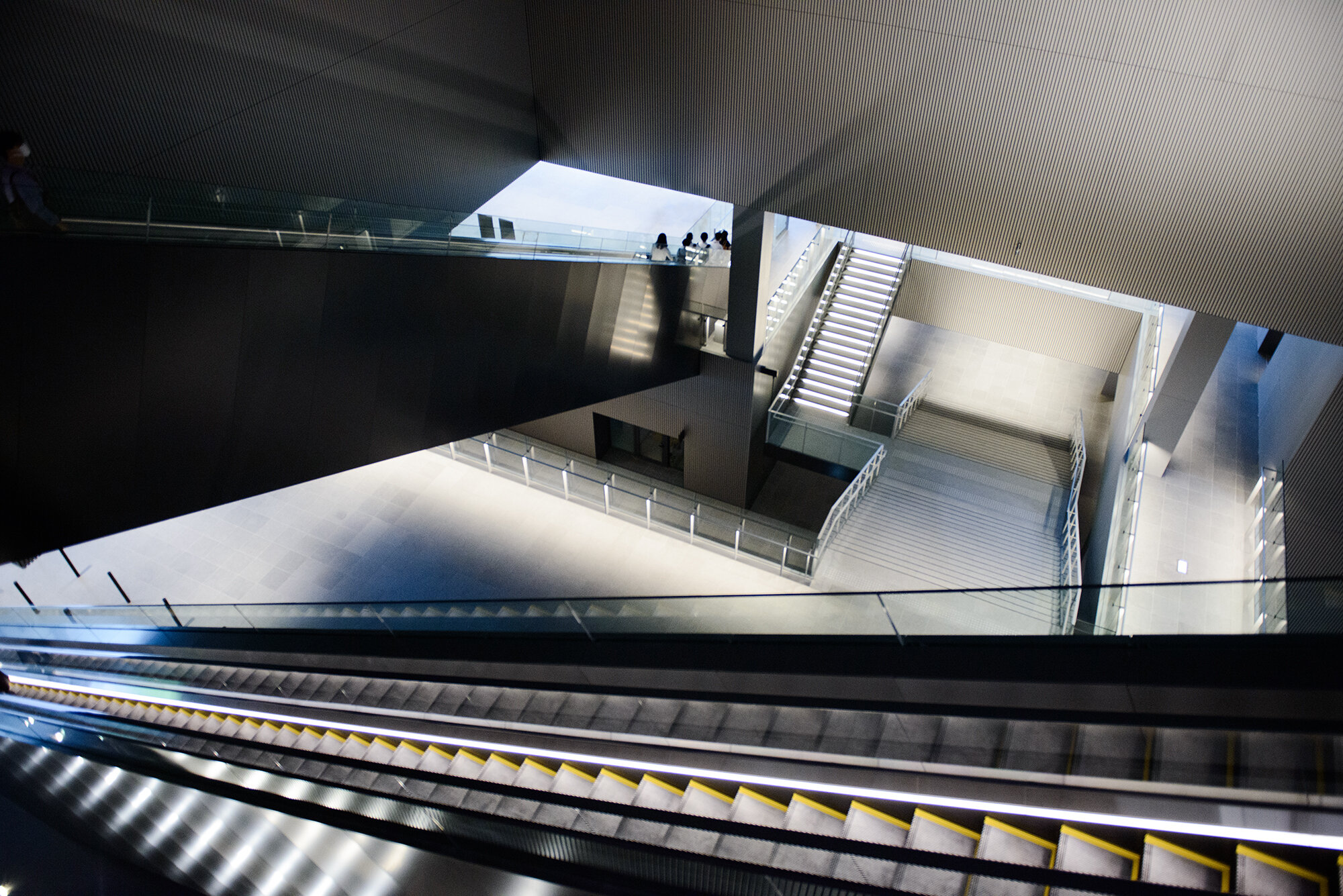
Based on the concept of an “art museum like a metropolis where a variety of people and activities intersect,” the building is designed as a passage (a word that in French refers to a path through an area or a covered arcade for pedestrians) where people crisscross as they move through the space in different directions. Designed by architect Endo Katsuhiko.
Curator Nakamura Fumiko’s thoughts about her favorite piece
Curator Nakamura Fumiko explains why she chose Yanobe Kenji’s Giant Torayan as her favorite piece.
"The most fascinating thing about Yanobe's work is the way it gives concrete form to his own imaginings and delusions. Giant Torayan, which sprang forth from this, has been exhibited not only in museums but in various other locations including Osaka City Hall and MASK (Mega Art Storage Kitakagaya), a giant warehouse in the Kitakagaya district of Osaka, to the delight of visitors. The piece has even breathed fire during some showings.
Today, with society facing so many problems, such as a declining birthrate/aging population and global warming, it seems like it has become hard to talk to children about the future and give them hope. However, Yanobe has put his own thoughts into this work, Giant Torayan, which encourages children to dream, showing them that if you put your mind to something and work hard, you can make your vision—no matter how grand—a reality. Art can show us possibilities for the future, and I believe that this is its true appeal.”
Nakamura Fumiko
Nakamura Fumiko is a senior curator at the Nakanoshima Museum of Art, Osaka. As a curator at Aichi Prefectural Museum of Art until 2023, she planned and was responsible for exhibitions including Photography Will Be (2014) and Yasui Nakaji: Photographs (2023). She served as a curator for Aichi Triennale 2022. Most recently, she has been lending support as the second-in-command for KAZUYO KINOSHITA: A Retrospective, which will be presented at the Nakanoshima Museum of Art, Osaka from May 25 to August 18, 2024. She specializes in contemporary art, photography, and visual culture.
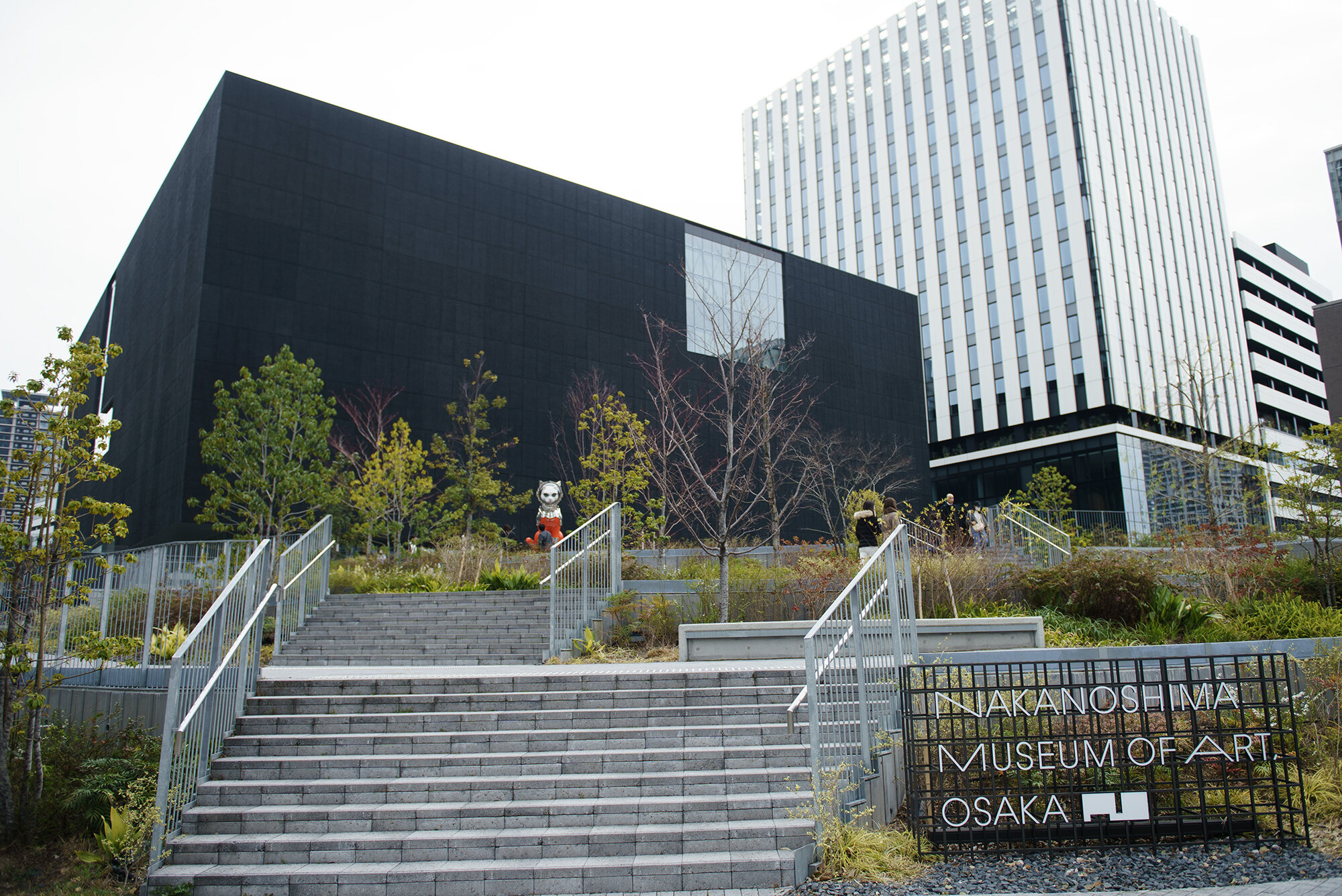
Nakanoshima Museum of Art, Osaka
4-3-1 Nakanoshima, Kita Ward, Osaka City
Tel 06-6479-0550
https://nakka-art.jp/en/
Interview and photographs by Nakajima Ryohei







